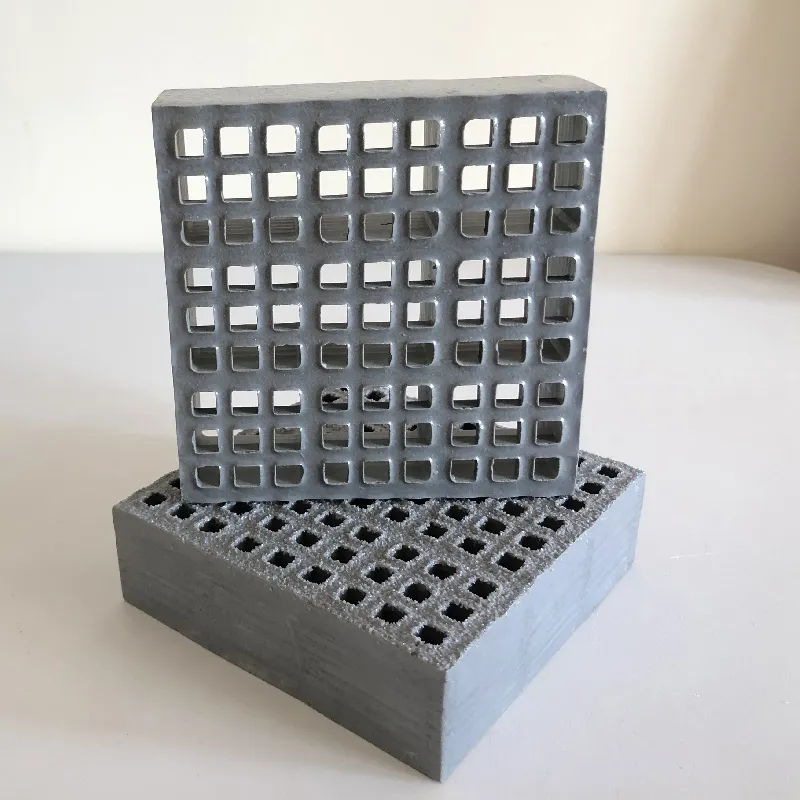loading...
- No. 9, Xingyuan South Street, Dongwaihuan Road, Zaoqiang County, Hengshui, Hebei, China
- admin@zjcomposites.com
- +86 15097380338
- Welcome to visit our website!
smc panel water tank
The Importance of SMC Panel Water Tanks in Modern Water Management
In recent years, the demand for efficient and reliable water storage systems has become increasingly critical as urbanization and industrialization expand globally. One innovative solution that has emerged in this context is the SMC (Sheet Molding Compound) panel water tank. Known for its versatility, durability, and cost-effectiveness, the SMC panel water tank serves as a vital component in modern water management strategies.
What is an SMC Panel Water Tank?
An SMC panel water tank is constructed from pre-fabricated panels made of reinforced fiberglass and resin. These panels are molded under high pressure to create a strong yet lightweight material that can withstand significant pressure and environmental stress. SMC panel tanks can be assembled on-site, allowing for a modular approach to water storage solutions. This flexibility makes them particularly suited for a variety of applications, from urban water supply systems to agricultural needs.
Advantages of SMC Panel Water Tanks
1. Durability One of the standout features of SMC panel water tanks is their remarkable resistance to corrosion, rust, and UV degradation. Unlike traditional steel tanks, which can degrade over time due to environmental conditions, SMC tanks maintain their integrity and provide a long service life of over 30 years, making them a sustainable choice for water storage.
2. Lightweight and Easy to Install The lightweight nature of SMC panels facilitates easier transportation and installation. This property reduces labor costs and minimizes the time required for setup. Given the rapid pace of urban development, the ability to quickly deploy water storage solutions is invaluable.
3. Customizable Designs SMC panel tanks come in various sizes and configurations. They can be tailored to fit specific site requirements and can be easily expanded or relocated if needed. This flexibility allows for the effective management of fluctuating water demands, particularly in regions experiencing seasonal variations.
smc panel water tank

4. Hygienic Water Storage SMC tanks are designed with health and safety in mind. The materials used are non-toxic and do not leach harmful substances into the stored water, ensuring that the water remains clean and safe for consumption. Additionally, the smooth surface of SMC panels prevents algae and bacterial growth, further enhancing water quality.
5. Cost-Effectiveness Despite the initial investment, SMC panel water tanks can lead to substantial savings in the long term. Their durability means lower maintenance costs, and their efficiency in storage reduces the need for frequent replacement, making them a financially prudent choice for communities and businesses.
Applications in Various Sectors
SMC panel water tanks are employed in a variety of sectors, including municipal water supply, industrial applications, agriculture, and firefighting systems. In municipal settings, they can serve as a vital resource for storing potable water, especially in areas facing water scarcity. In agriculture, these tanks provide essential irrigation water, ensuring crops receive adequate hydration, which is crucial for maximizing yield.
In industrial settings, SMC panel tanks can be used to store not only water but also various chemicals and liquids, providing a safe and reliable solution that meets industrial standards. Additionally, they serve critical roles in emergency preparedness, particularly in firefighting, where a reliable water supply is paramount for effective response.
Conclusion
As global water challenges escalate, the adoption of innovative solutions like SMC panel water tanks becomes imperative. Their unique blend of durability, flexibility, and cost-effectiveness positions them as a key player in modern water management. By facilitating efficient water storage and distribution, SMC panel water tanks contribute significantly to sustainable practices that ensure the availability of clean water for future generations. Embracing such technologies is essential for addressing the growing water demands of urban and rural communities alike, ensuring resilience in the face of changing environmental conditions.
-
Transform Your Spaces with FRP Grating SolutionsNewsNov.04,2024
-
The Versatility and Strength of FRP RodsNewsNov.04,2024
-
The Excellence of Fiberglass Water TanksNewsNov.04,2024
-
The Benefits of FRP Grating for Your ProjectsNewsNov.04,2024
-
Elevate Your Efficiency with FRP Pressure VesselsNewsNov.04,2024
-
Welcome to the World of FRP Pressure VesselsNewsOct.12,2024
-
Unveiling the Future of Filtration: Why FRP Filter Vessels are a Game ChangerNewsOct.12,2024
